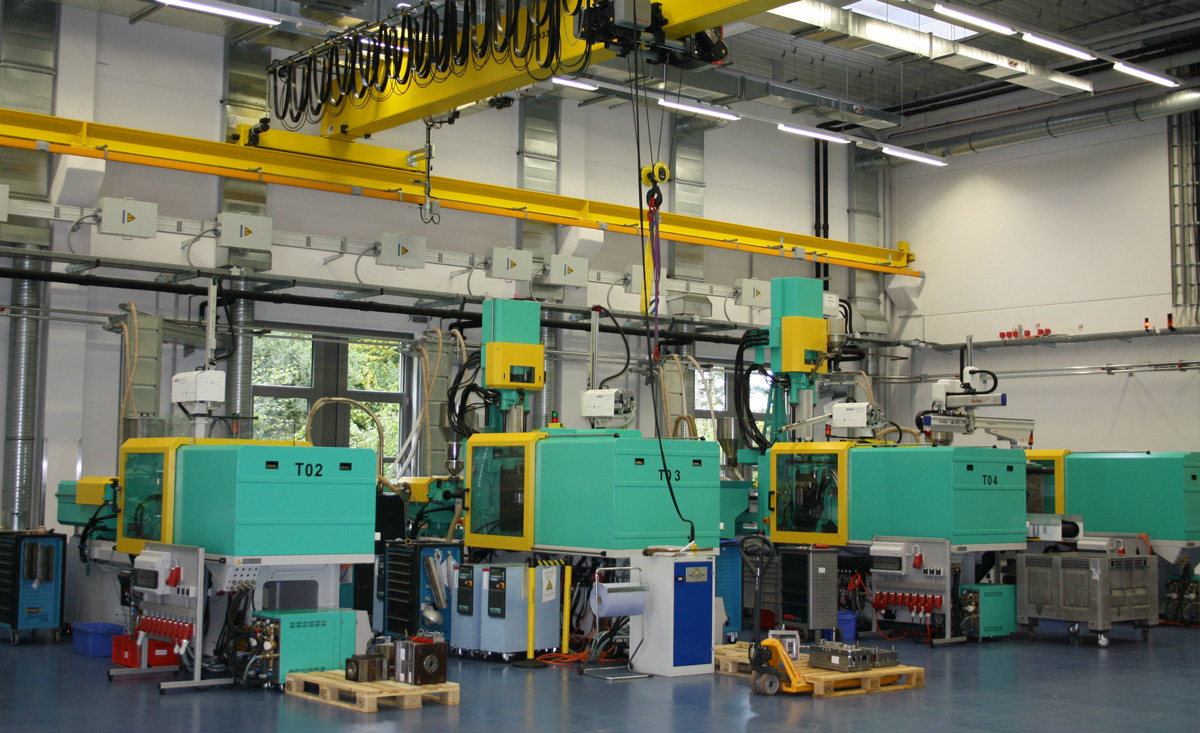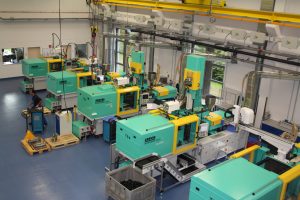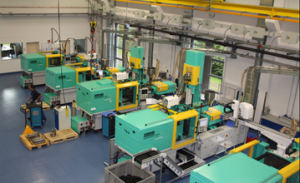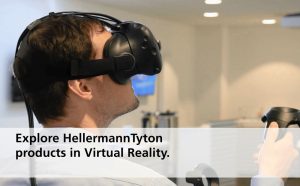De Europese economie drijft niet op grondstoffen, maar op ontwikkelingscompetentie en innovatiekracht. Een voorbeeld van…
Plastics moulding competence bundled in purpose-built Technology Centre

Germany’s economy thrives from the country’s development competence and its innovative strength – from engineering excellence, rather than from natural resources.
Superb examples of design innovation paired with cutting edge production technology for high-grade plastics can be found at the HellermannTyton site in Tornesch, near Hamburg, Germany.
The products that stem from the company’s know-how are used throughout the world, wherever cables are laid. The company’s wealth of expertise in high-quality plastics for cable management solutions –which has been amassed over nearly eighty years of operation – is bundled in HellermannTyton’s Technology Centre.
Injection moulding expertise under one roof
Six of the most advanced, high-performance injection moulding machines on the market were installed in the purpose-built Technology Centre hall mid-2013. This equipment ensures fast and efficient sampling of new moulds and allows for designs and materials to be tested independent of production processes. What does this mean in practice?
Quality and precision are crucial when it comes to production using injection moulding technologies. Once innovative preliminary work has been carried out by teams in product development and machine construction, the next step is to carry out tests to ensure that everything performs precisely as envisaged in a 3D virtual model (Wikipedia link: What is CAD?). The HellermannTyton Technology Centre in Germany is responsible for this vital testing process for HellermannTyton’s worldwide operations.
Dedicated space to support growing demand
In 2012, the existing Technology Centre was working to full capacity. Given the large number of orders on the company’s books for 2013 and 2014 and also the need for the latest machinery with greater clamping forces for testing larger moulded components, or for single products made of two components (2C), the move into a purpose-built hall was implemented quickly.
The Technology Centre currently has nine employees working on optimising products, product cycles and long-term quality assurance. With the state-of-the art, energy-efficient injection moulding machinery available in the 760 m2 Technology Center, these staff has been able to achieve significant operational efficiency gains because all injection moulding trials can now be performed at any time without interrupting regular production.
In the process of sampling an injection mould, attributes of both the mould and the final product are inspected closely. The Technology Centre is where new moulds – also referred to as manufacturing tools – are trialled in order to understand how they perform under real production conditions. That means performing tests on the mould to ensure it functions perfectly and meets the high specifications demanded for the finished product.
Achieving repeatable, high quality plastic injection moulded parts
Each injection mould is tested over a 24 hour period to put the tool through its paces and define the parameters for serial production. This first sampling process is of fundamental importance, as each mould can contain a large number of individual “nests” – i.e. precisely engineered identical profiles of the same finished plastic product. A variety of intricate physical and economic factors determine the number of nests created in each mould. According to the particular production scenario, this might be anything from 4 to 32 profiles. Click here to learn more about product “Engravings” and their role identifying individual nest origins.
Quality assurance for all products, but in particular for those manufactured from high-grade materials, such as the plastic Polyetheretherketone (PEEK), is a key part of the Technology Centre’s work. PEEK is suitable for extremely high-temperature applications, such as in aero engines, where safety is of the utmost importance.

As a result of the new Technology Centre, HellermannTyton has also been able to make significant advances in the development of two-component (2C) and multi-component products, which offer excellent potential for cable management solutions that address many of today’s technological challenges and demands of our customers.
Thanks to the work of the Technology Centre, the high quality of HellermannTyton’s products can be assured and sustained in the long term. This helps the global company sustain the pace of its cable management solution innovation tailored to specific requirements of customers in all industries.
You can find further information on how injection moulding works on YouTube searching for “injection molding process animation”
#864




I believe current injection molding methods are more environment friendly as compared to earlier methods, because of efficient machinery and durable thermosetting polymers capable of withstanding abuse, and extreme temperatures. Thanks for sharing keep it up